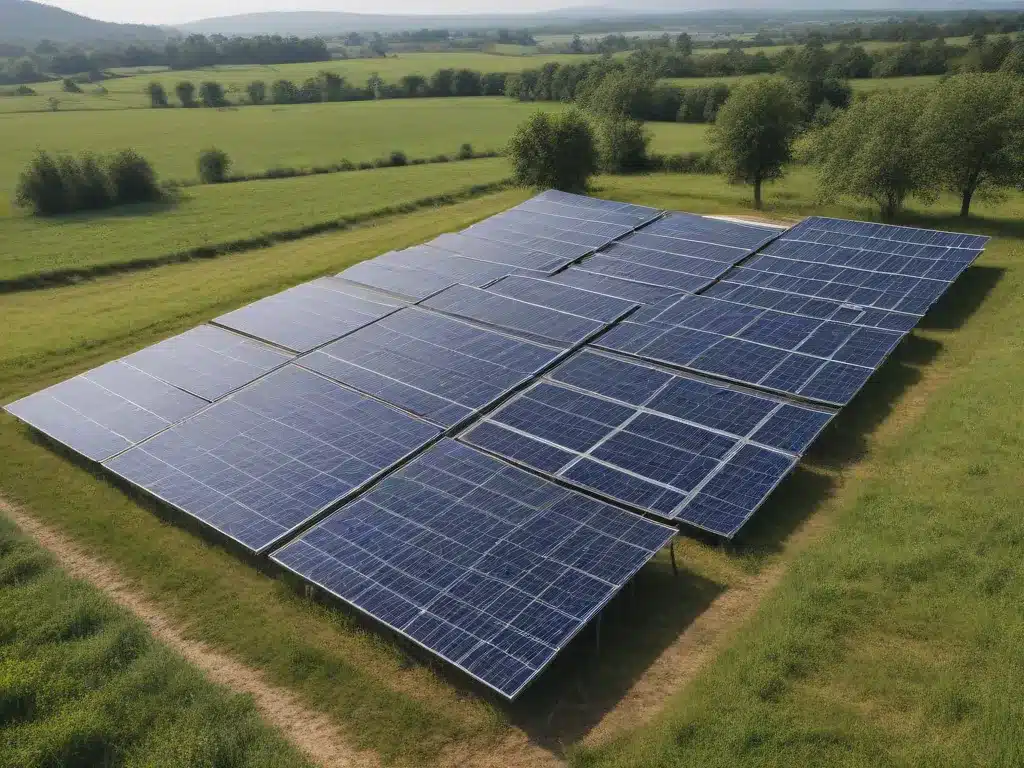
Introduction
As the world grapples with the pressing issue of climate change, the need for sustainable and eco-friendly energy sources has become paramount. One of the most promising solutions is solar energy, harnessed through the use of solar panels. In this comprehensive article, I will delve into the intricacies of generating renewable energy with solar panels, exploring the technology, its benefits, and the practical aspects of installation and maintenance.
What are Solar Panels?
Solar panels, also known as photovoltaic (PV) panels, are devices that convert sunlight into electrical energy. These panels consist of multiple solar cells made from semiconductor materials, typically silicon. When sunlight strikes the solar cells, the photons from the sunlight dislodge electrons from the semiconductor material, creating an electrical current that can be harnessed and used to power homes, businesses, and even entire communities.
How Do Solar Panels Generate Electricity?
The process of generating electricity with solar panels is a fascinating one. Here’s how it works:
- Solar panels – absorb sunlight through their solar cells.
- Semiconductor materials – within the solar cells, the photons from sunlight dislodge electrons, creating an electrical current.
- Electrical circuit – the electrical current is directed through a circuit, where it can be converted and conditioned for use.
- Inverter – the direct current (DC) generated by the solar panels is converted into alternating current (AC) by an inverter, making it compatible with household appliances and the electrical grid.
- Electrical panel – the converted AC electricity is then sent to an electrical panel for distribution and consumption.
Benefits of Solar Energy
Generating renewable energy with solar panels offers numerous benefits, including:
- Environmental Sustainability: Solar energy is a clean and renewable source of energy, producing no greenhouse gas emissions or harmful pollutants during operation.
- Cost Savings: While the initial investment in solar panels can be substantial, the long-term savings on electricity bills can offset this cost over time.
- Energy Independence: By generating your electricity, you become less reliant on utility companies and fluctuating energy prices.
- Increased Property Value: Homes and businesses equipped with solar panels often enjoy an increased property value, as they are perceived as more environmentally friendly and cost-effective.
- Low Maintenance: Solar panels require minimal maintenance, with most systems designed to operate for 25 years or more with proper care.
Types of Solar Panel Systems
There are several types of solar panel systems available, each designed to meet specific energy needs and requirements:
- Grid-tied Systems: These systems are connected to the local electrical grid, allowing you to draw power from the grid when your solar panels are not generating enough electricity, and feed excess energy back into the grid when you produce more than you need.
- Off-grid Systems: These standalone systems are not connected to the electrical grid and are typically used in remote areas or for applications where grid connection is not feasible. They often incorporate battery storage to store excess energy for use during periods of low sunlight.
- Hybrid Systems: As the name suggests, hybrid systems combine solar panels with other energy sources, such as wind turbines or generators, to provide a more reliable and consistent power supply.
Installation and Maintenance
Installing a solar panel system is a multi-step process that typically involves the following:
- Site Evaluation: A professional solar installer will assess your property to determine the optimal location and orientation for the solar panels, taking into account factors such as sun exposure, shading, and roof structure.
- System Design: Based on your energy needs and the site evaluation, the installer will design a custom solar panel system, specifying the number of panels, inverters, and other components required.
- Permitting and Approvals: Depending on your location, you may need to obtain permits and approvals from local authorities before installing a solar panel system.
- Installation: The solar panels and associated components are installed by a team of trained professionals, ensuring proper positioning, wiring, and connection to your electrical system.
- Maintenance: While solar panels require minimal maintenance, periodic cleaning and inspection are recommended to ensure optimal performance and longevity.
Real-World Examples and Case Studies
To illustrate the practical application of solar panel technology, let’s explore some real-world examples and case studies:
- Residential Solar Installation: John and Sarah, a couple living in a suburban area, decided to install a grid-tied solar panel system on their roof. After the initial investment, they have been able to significantly reduce their monthly electricity bills and even sell excess energy back to the utility company during peak production periods.
- Commercial Solar Farm: A large-scale solar farm was constructed in a rural area, consisting of thousands of solar panels spread across acres of land. The farm generates enough electricity to power an entire town, reducing the region’s reliance on fossil fuels and contributing to a more sustainable energy future.
- Off-grid Solar Solution: In a remote village without access to the electrical grid, a non-profit organization installed an off-grid solar panel system with battery storage. This system now provides reliable electricity to power essential services, such as schools, clinics, and water pumps, improving the quality of life for the residents.
Conclusion
Generating renewable energy with solar panels is a promising solution to our energy needs, offering numerous benefits for both individuals and communities. As technology continues to advance and costs become more affordable, solar energy is poised to play a significant role in our transition toward a more sustainable and eco-friendly future. By embracing this technology, we can collectively contribute to the fight against climate change while enjoying the benefits of clean, reliable, and cost-effective energy.
















